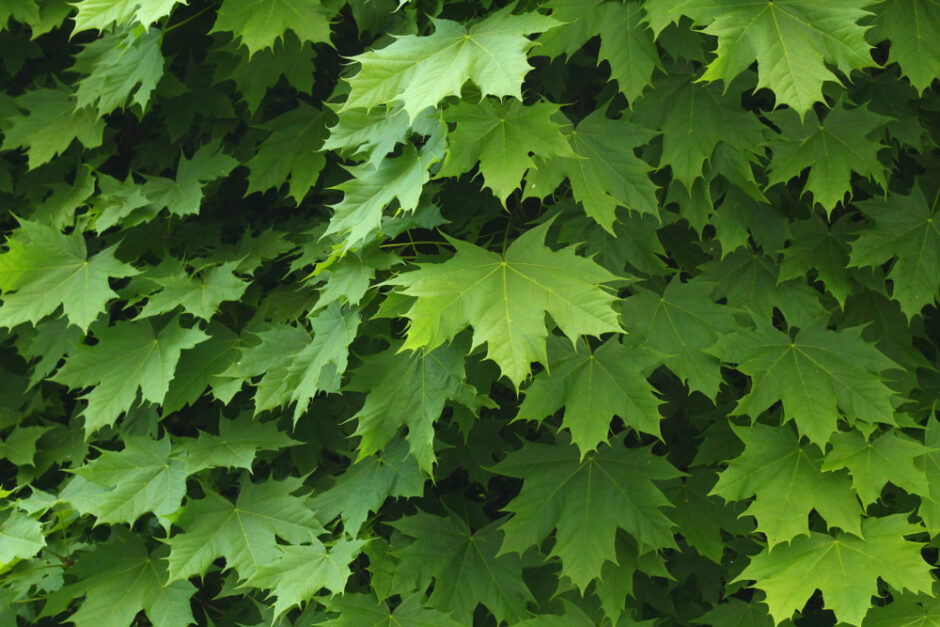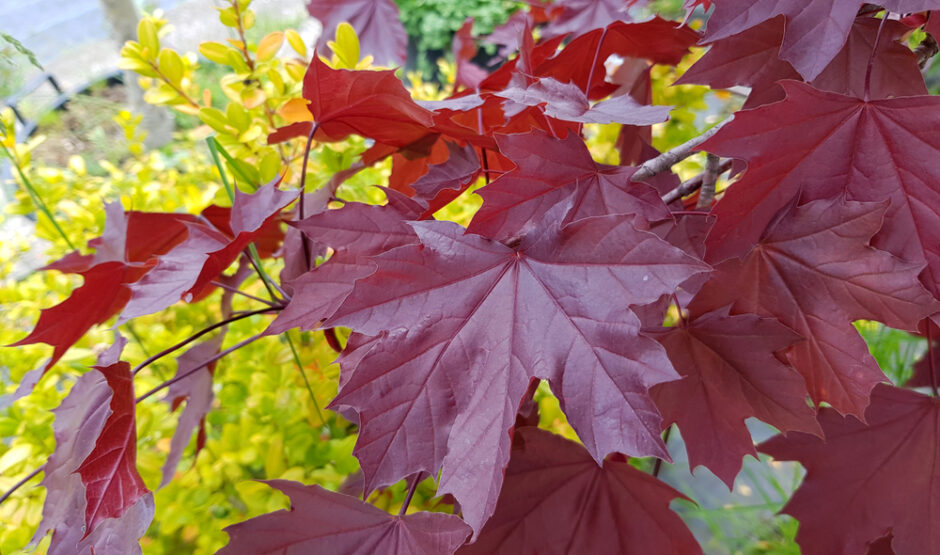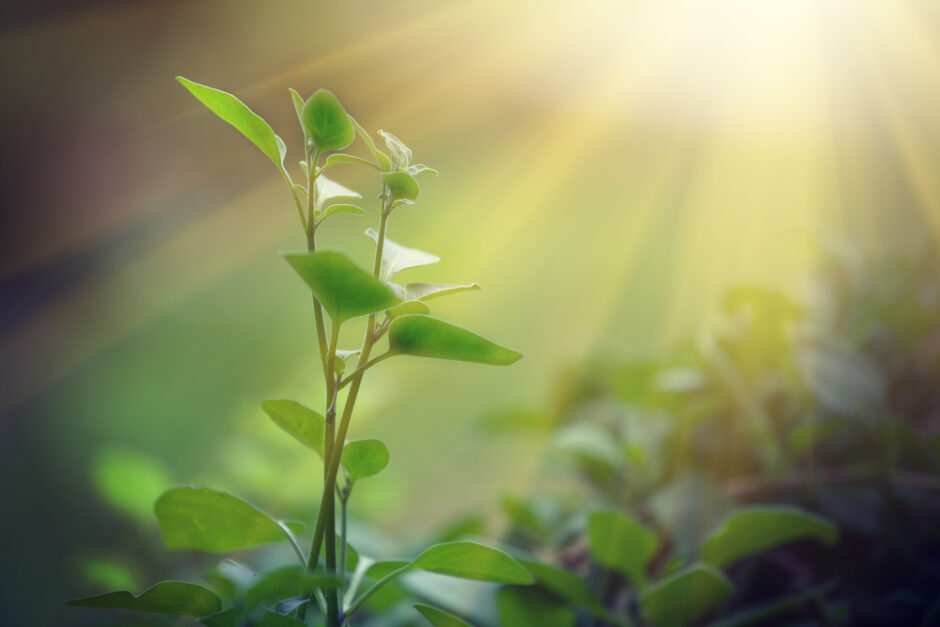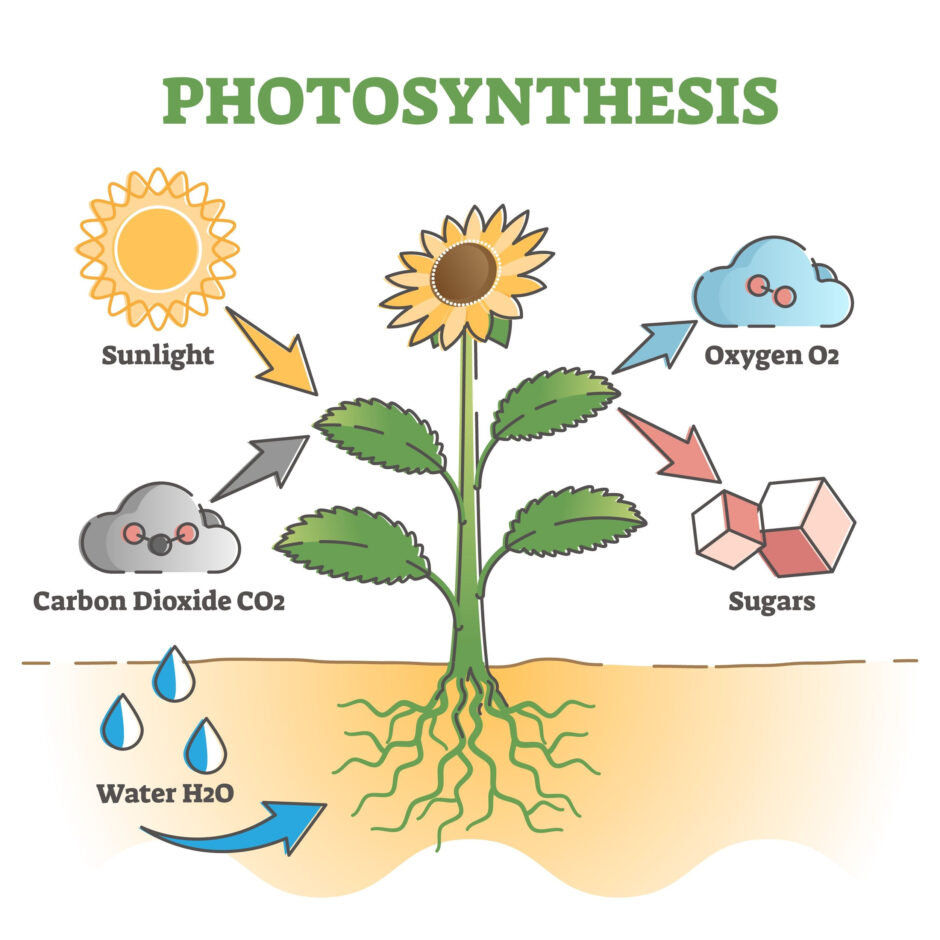
Acer platanoides – The Norway Maple
Leaves make the sugary food that their host plant needs to live. Everyone knows that …. don’t they?
But the thing is …. how do they do it?

Acer platanoides ‘Crimson King’
So, leaves are green (except when they’re not), and even leaves which don’t appear to be green have the green pigment within them.
This green pigment is called ‘Chlorophyll’. It is an essential ingredient in this whole process, as are Carbon Dioxide from the surrounding air, and sunlight.
These three ingredients are what much of plant life absolutely depends upon.

A young plant turning its leaves towards the Sun
But it’s a big ask to believe that these ingredients can end up having helped to create things like plants, and the way that they acquire food.
So, how does it work …. and does it have a name?

